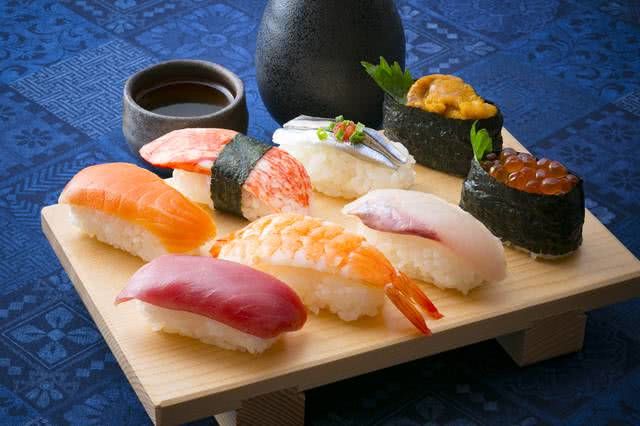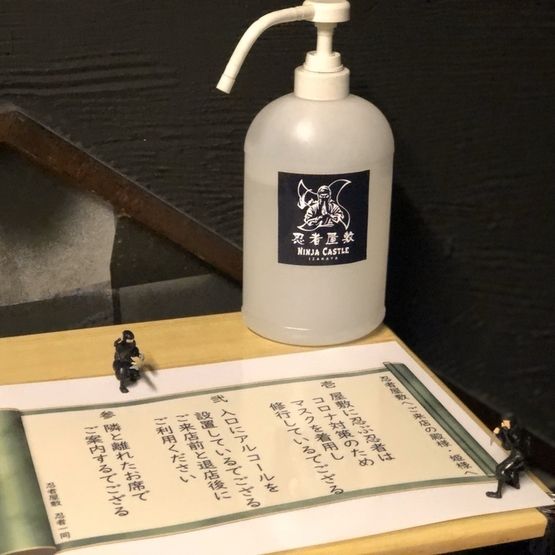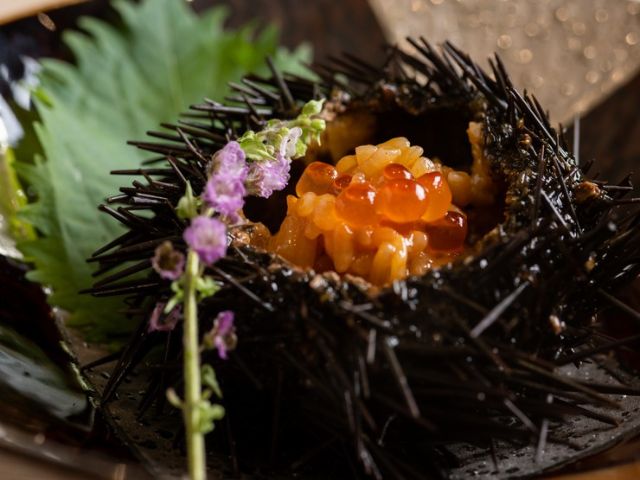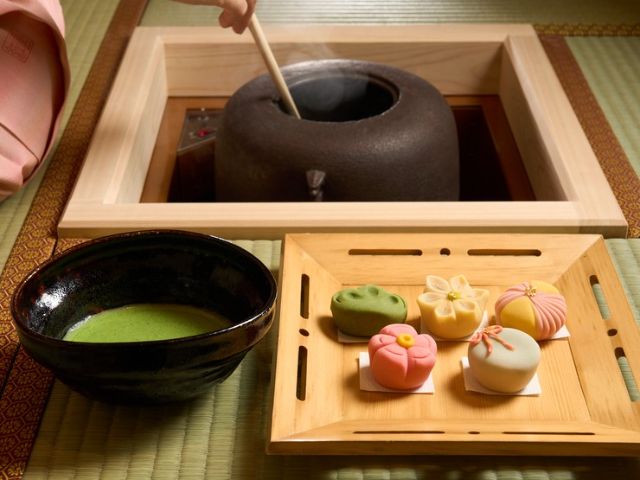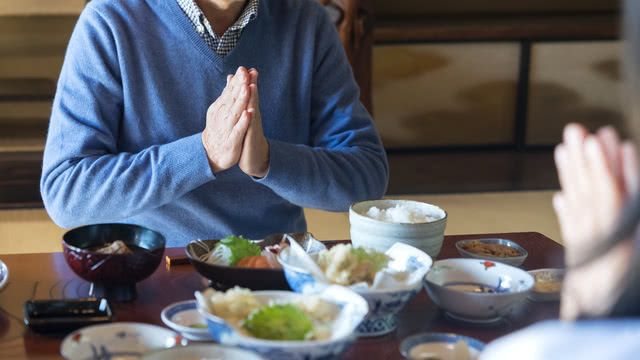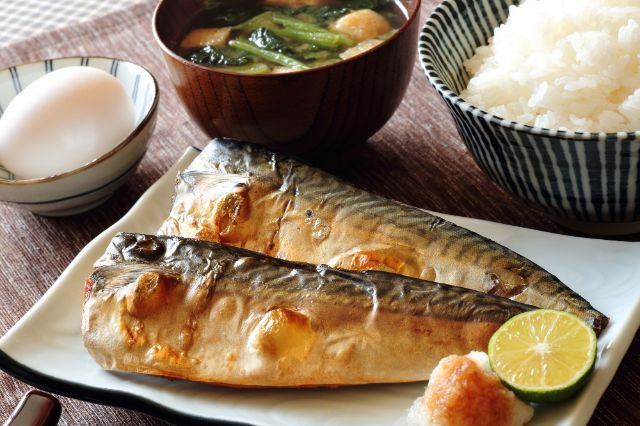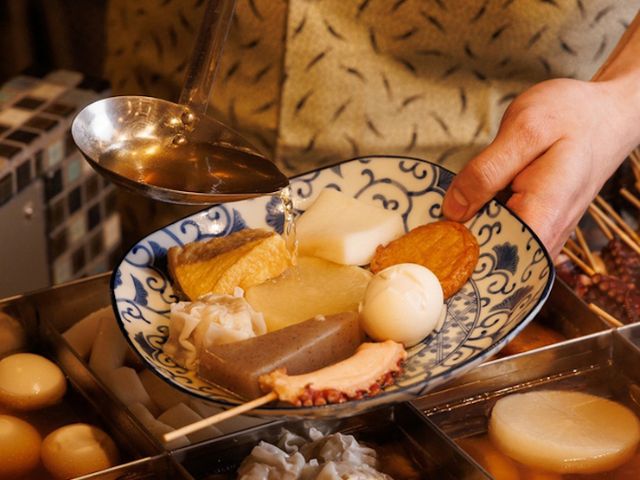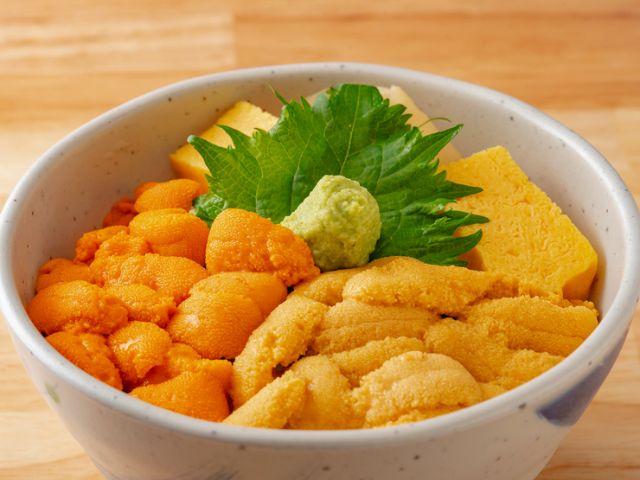An Introduction to Formal Japanese Restaurant Etiquette
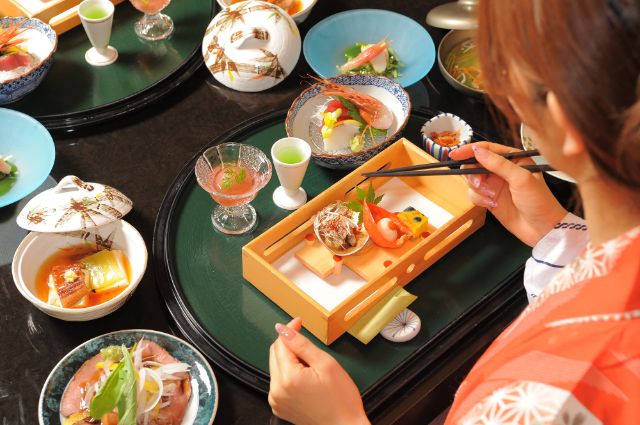
Are Japan’s Etiquette Rules Confusing for Foreigners?
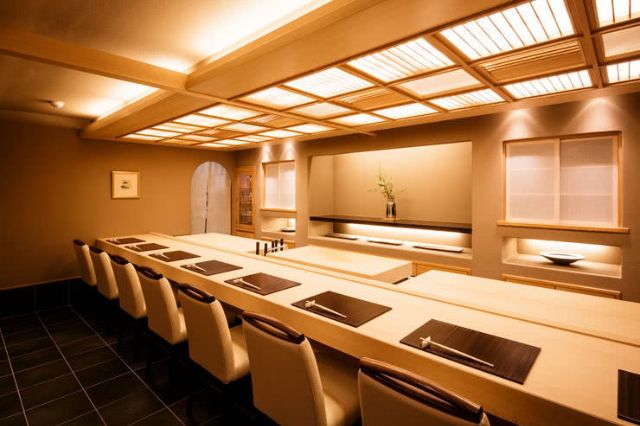
These small mistakes based in cross-cultural differences are easy to understand. For example, a very common mistake made by people from the West is seasoning their rice with condiments like the soy sauce or pickles they find on the table. Since buttering bread or adding salt and pepper to a dish is considered perfectly acceptable in the West, it makes sense that Western diners would assume they are free to add extra seasonings to their rice, too. However, try to resist the temptation while you're in Japan. It not only looks uncouth, you’ll be missing out on the chance to taste the meal the way it was intended.
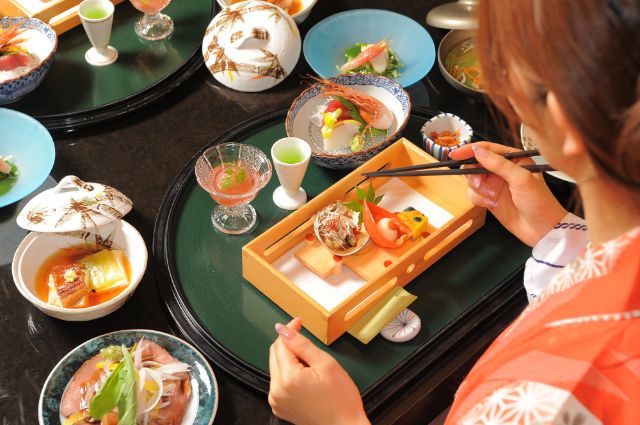
So, if Japanese rules seem confusing, we recommend thinking about the reasoning behind them. For example, it’s better manners to set chopsticks down on a chopstick rest because it keeps both the chopsticks and the table clean. It goes without saying that licking or sucking on your chopsticks is frowned upon because it can spread germs.
Other breaches of etiquette, such as digging through a shared bowl with your chopsticks, using them to drag a bowl closer to you, or eating side dishes without stopping to eat some rice gives off a greedy, impatient impression that is unpleasant to see. In a similar way, transferring food from chopsticks to chopsticks, or sticking them upright in a bowl of rice both bring to mind unpleasant associations with funeral practices, which hardly enlivens a meal.
In other words, while a list of etiquette rules may seem intimidating at first, considering the reasons behind them may help you remember (or even guess) the right way to act while in a formal situation in Japan.
How to Eat Japanese Kaiseki Banquets and Course Meals
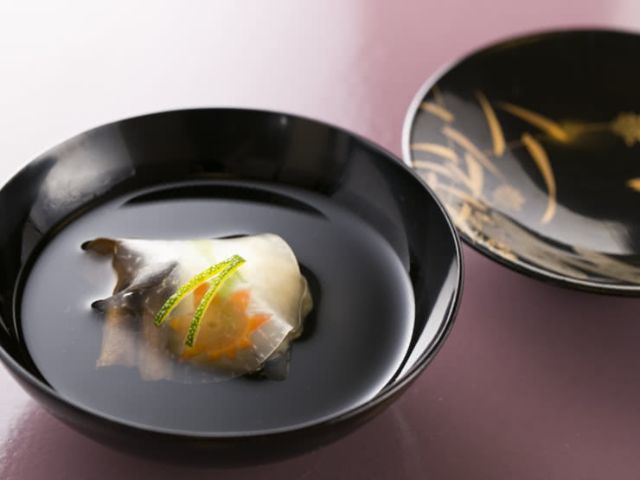
In a similar way, the proper way to handle soups served in a bowl with a lid can confuse people who encounter it for the first time. To eat from these bowls with correct manners, gently hold the bowl steady with the left hand while lifting the lid with the right. Let any condensation drip back into the dish, then turn the lid over and place it face up on the table. Soup spoons are not part of traditional Japanese cuisine; instead, you should eat any larger ingredients with chopsticks, then drink the soup straight from the bowl. When finished, place the lid neatly back on top of the bowl again.
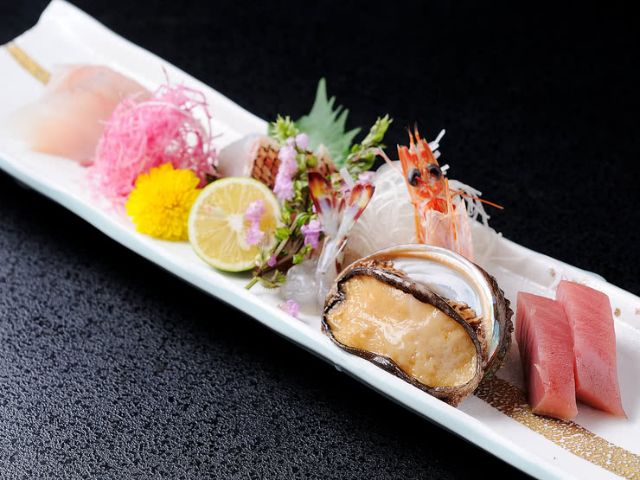
When eating a mixed assortment, remember that the goal is to avoid ruining your dining companion’s appetites with the sight of messy, half-eaten foods. When eating foods like tempura, you should start with the pieces close to you. If you're eating from a platter or similar dish, move from the left hand side, taking care not to disturb the rest of the presentation as you go.
All these rules are mainly designed to avoid turning the table into an unappetizing landscape of spills and mess. If you approach your formal dining experience with this goal in mind, your consideration and good manners are sure to be appreciated, even if you don't follow every etiquette rule to the letter.
Manners Even Japanese People Ignore
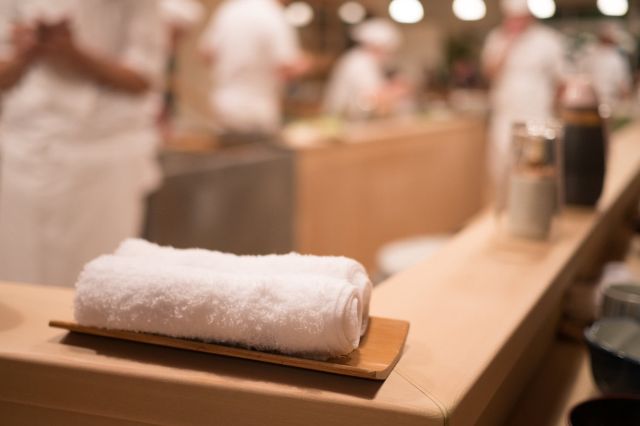
Most restaurants will provide you with a rolled hand towel called a shibori. This towel will usually be warmed in the cooler months and chilled in the summer months. Some people wonder what to do with a shibori when they first encounter it, and it’s not unusual to see Western people using it as you would with a napkin. This is hardly a surprising mistake. After all, most restaurants will provide a similar cloth napkin for this same purpose in Western restaurants. In Japan, however, you should simply use the hand towel for cleaning your hands at the start of the meal.
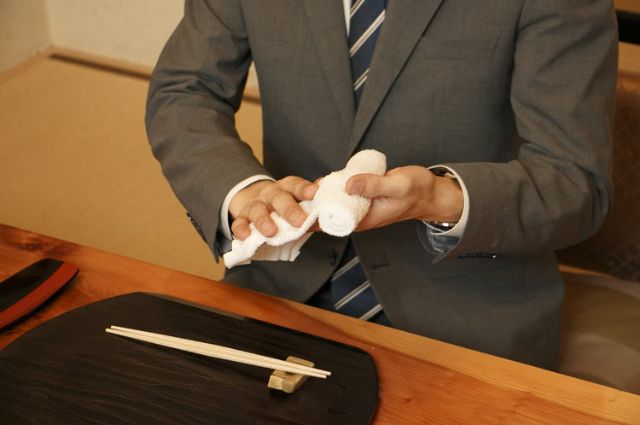
Of course, minor breaches of manners are unlikely to bother anyone when you're eating out with your friends or family. Still, it's always good to know the rules before breaking them! So, to use a shibori in a formal situation, you should pick up the towel with your right hand and transfer it to your left. Unroll it and wipe your hands using only one side of the towel. When finished, fold the towel neatly so that the soiled side is on the inside, and place it back on the table.
Surprising Restaurant Systems in Japan
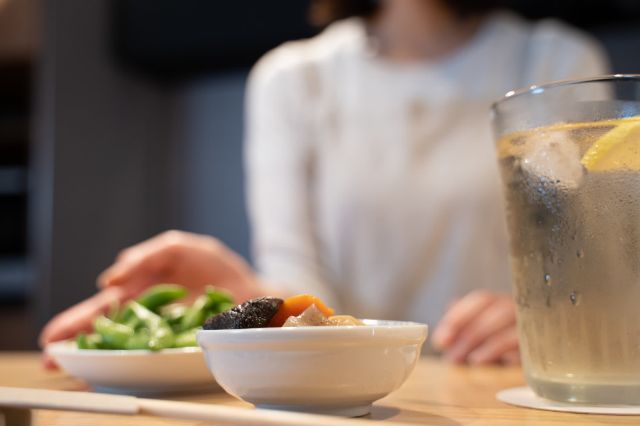
One element that takes a lot of people by surprise is the custom of otooshi, which are small appetizers served before a meal in izakaya (Japanese pub). Fans of Korean food might be familiar with a similar practice of banchan, or small complimentary dishes of kimchi and other sides. The difference between otooshi and banchan, however, is that otooshi dishes will show up on your bill!
Unfortunately, because the practice of otooshi isn't something you often see at Japanese restaurants overseas, the first time many visitors experience this practice is when they see a charge for items they didn't order on their bill. In fact, foreign guests angrily disputing the charge has become a serious hassle for izakaya owners.
Restaurants Where You Can Put Your Japanese Manners Into Practice
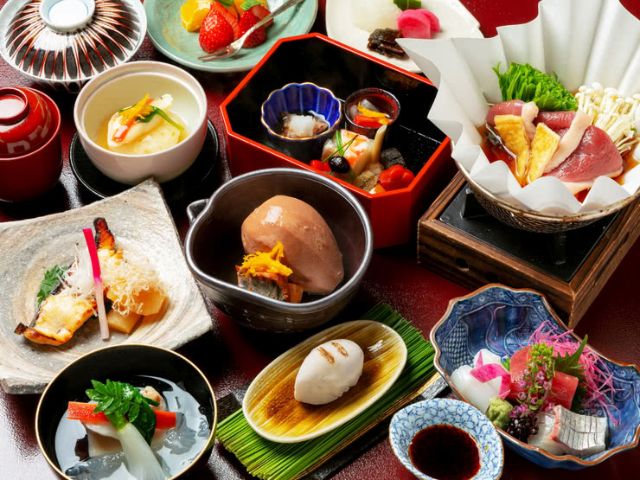
Kyoto Ayanokoji Mangetu-no-Hana
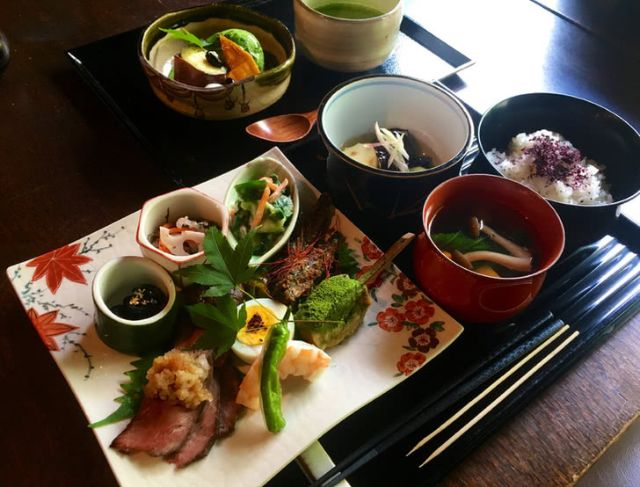
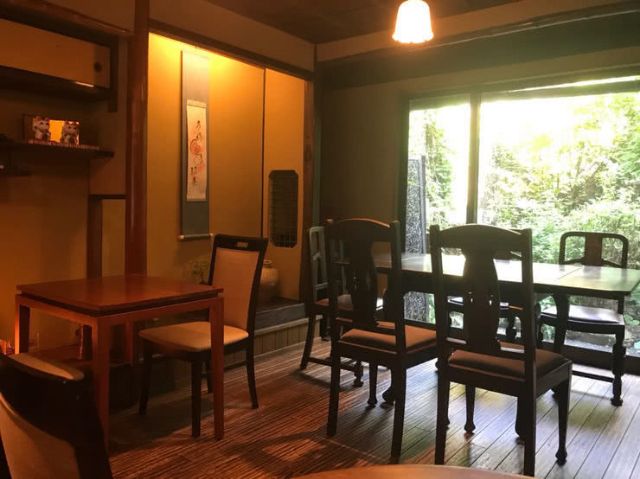
Kyoto Ayanokoji Mangetu-no-Hana
Closed: Tuesday
Average price: [Dinner] 4,000 JPY / [Lunch] 1,500 JPY
Address: 206-1, Ayanokoji-dori, Sakai-machi Higashi-iru, Ayazaimoku-cho, Shimogyo-ku, Kyoto-shi, Kyoto
Yuba Higashiyamayuuzu
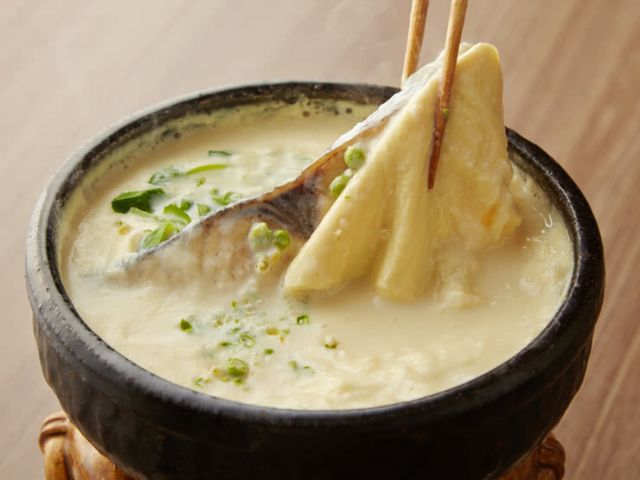
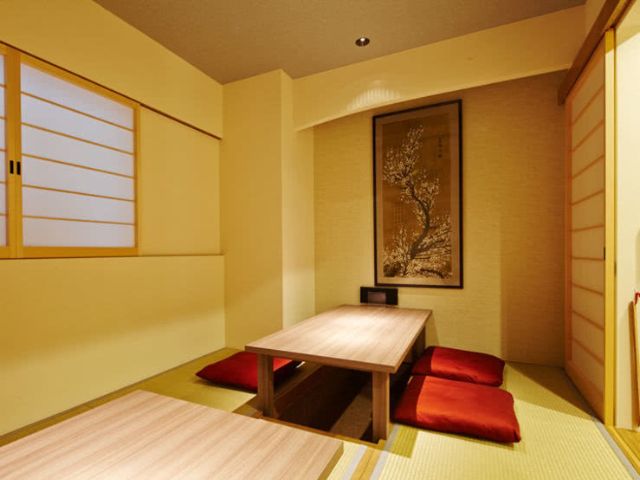
Yuba Higashiyamayuuzu
Closed: Thursday
Average price: [Dinner] 5,000 JPY / [Lunch] 2,000 JPY
Address: 570-218, Gion-machi Minami-gawa, Higashiyama-ku, Kyoto-shi, Kyoto Map
More Details Reservation
Teramachi Yoshikura
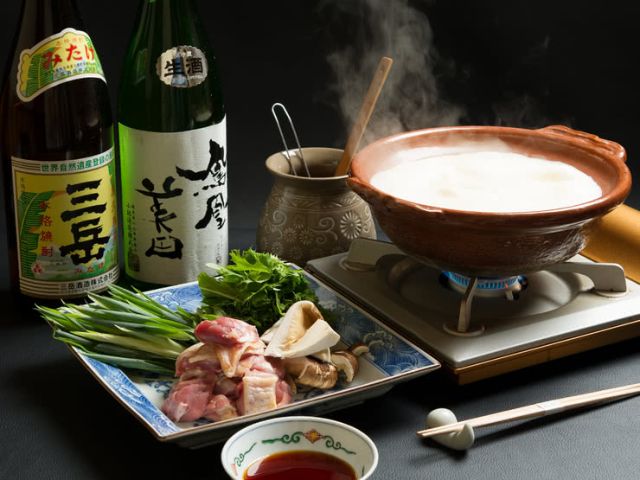
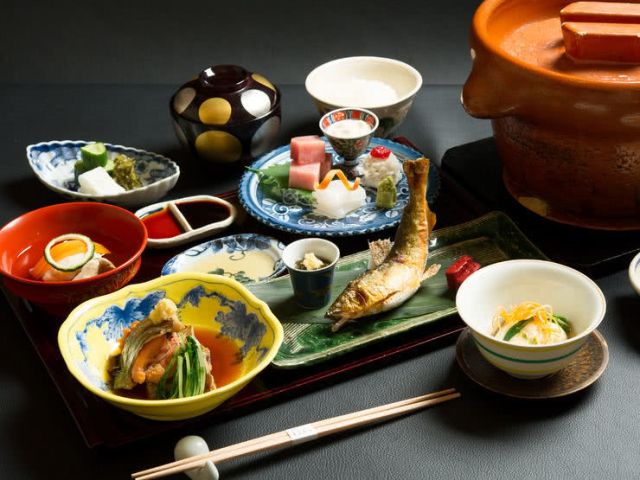
Teramachi Yoshikura
Closed: Tuesday
Average price: [Dinner] 5,300 JPY / [Lunch] 1,350 JPY
Address: 1F, Corpo Shimoyama, 102, Shinnyodomae-cho, Kamigyo-ku, Kyoto-shi, Kyoto Map
More Details Reservation
Kyoto Hyoto Shijo Karasuma
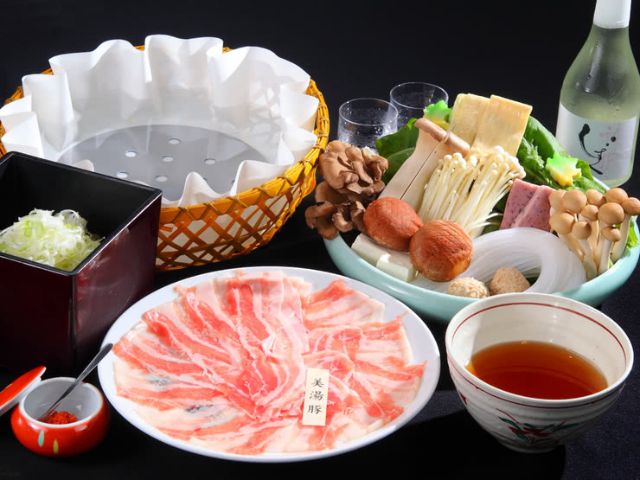
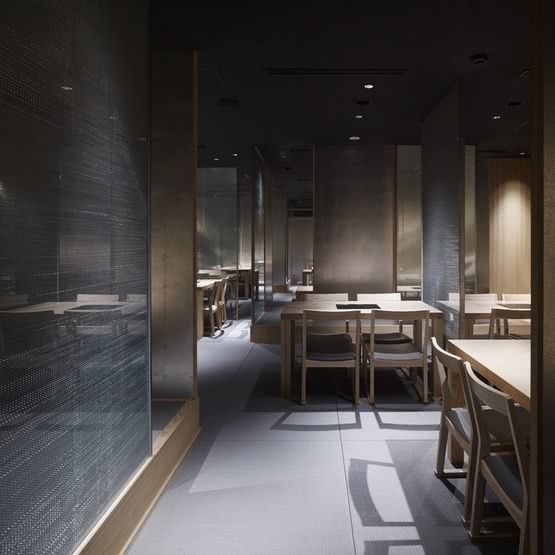
Kyoto Hyoto Shijo Karasuma
More Details
Kyo Suiran
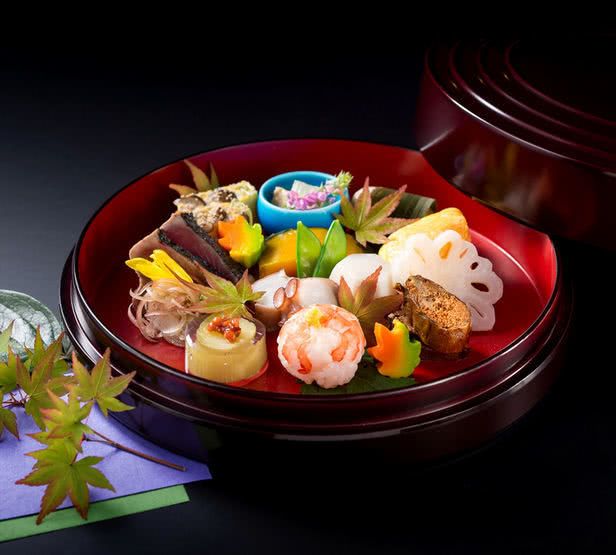
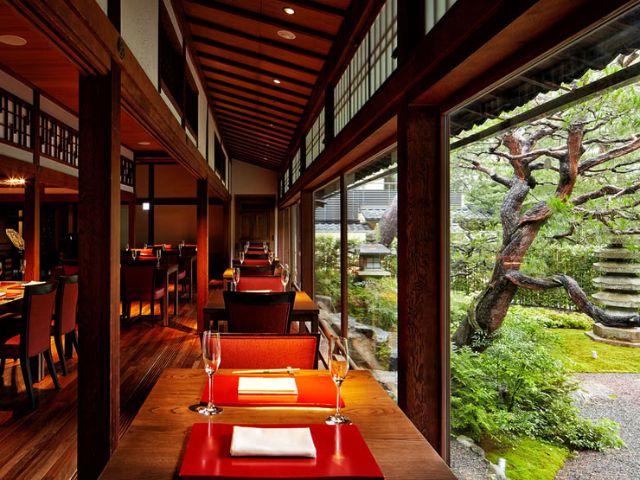
Kyo Suiran
Closed: None
Average price: [Dinner] 18,000 JPY / [Lunch] 6,000 JPY
Address: 12, Sagatenryuji Susukinobaba-cho, Ukyo-ku, Kyoto-shi, Kyoto Map
More Details Reservation
Disclaimer: All information is accurate at time of publication.
Thank you for reading our article.
Our goal is to take your culinary journey to the next level by helping you find the best restaurant. With SAVOR JAPAN, you can search and make reservations for
the Japanese Cuisine restaurants found in and around that fill your needs.
Discover more Japanese Cuisine restaurants by area
- Tokyo Area
- Near Tokyo
- Kyoto and Osaka Area
- Hokkaido Area
- Northern Honshu (Tohoku)
- Central Honshu (Chubu)
- Western Honshu (Chugoku)
- Shikoku
- Kyushu
- Okinawa and Ryukyu Islands
Discover more restaurants to eat Japanese Cuisine by area
Keywords
Related Articles
New Articles
Categories
Cuisine
- Bars (23)
-
Japanese Cuisine (676)
- Kaiseki (46)
- Nabe (19)
- Okonomiyaki (24)
- Shabu Shabu (36)
- Soba (17)
- Sushi (137)
- Tempura (18)
- Teppanyaki (46)
- Shojin Ryori (3)
- Tonkatsu (12)
- Kushiyaki (10)
- Yakitori (46)
- Sukiyaki (35)
- Japanese Cuisine (341)
- Oyster (2)
- Sashimi/ Seafood (19)
- Unagi (eel) (30)
- Motsu Nabe (offal hotpot) (6)
- Mizutaki (chicken hot pot) (3)
- Oden (8)
- Kaisendon (seafood bowl) (9)
- Udon (2)
- Taverns(Izakaya) Cuisine (125)
- Western Cuisine (42)
- Italian/French Cuisine (95)
- Yakiniku/Steak (224)
- Chinese Cuisine (26)
- Ramen (Noodles) Cuisine (26)
- Cafe/Sweets (60)
- Other Asian Cuisine (5)
- Global/International Cuisine (7)
- Alcohol (45)
- Other (11)
Area
- Shikoku (10)
- Kyoto and Osaka (345)
-
Tokyo (460)
- Tokyo (286)
- Ginza (44)
- Roppongi (22)
- Shibuya (26)
- Shinjuku (47)
- Asakusa (20)
- Ebisu (12)
- Tsukiji (10)
- Tokyo Landmarks (4)
- Ueno (24)
- Akihabara (9)
- Ikebukuro (12)
- Jiyugaoka, Denenchofu, Nakameguro (9)
- Shimokitazawa (4)
- Kichijoji (3)
- Tachikawa (1)
- Omotesando, Harajuku, Aoyama (18)
- Akabane (1)
- Kagurazaka (4)
- Akasaka (10)
- Odaiba (1)
- Tsukishima, Harumi, Toyosu (3)
- Near Tokyo (100)
- Okinawa and Ryukyu Islands (58)
- Hokkaido (124)
- Northern Honshu (Tohoku) (31)
- Central Honshu (Chubu) (144)
- Western Honshu (Chugoku) (32)
- Kyushu (92)
Archives
- December 2025(9)
- November 2025(4)
- October 2025(3)
- September 2025(6)
- August 2025(11)
- July 2025(19)
- June 2025(18)
- May 2025(34)
- April 2025(43)
- March 2025(30)
- February 2025(36)
- January 2025(26)
- December 2024(69)
- November 2024(31)
- October 2024(15)
- September 2024(39)
- August 2024(65)
- July 2024(31)
- June 2024(54)
- May 2024(61)
- April 2024(28)
- March 2024(31)
- February 2024(42)
- January 2024(32)
- December 2023(20)
- November 2023(5)
- October 2023(11)
- September 2023(7)
- August 2023(18)
- July 2023(8)
- June 2023(8)
- May 2023(18)
- April 2023(15)
- March 2023(1)
- January 2023(1)
- April 2022(2)
- March 2022(2)
- February 2022(1)
- January 2022(1)
- July 2021(1)
- March 2021(1)
- February 2021(1)
- December 2020(1)
- October 2020(1)
- September 2020(2)
- August 2020(10)
- July 2020(6)
- June 2020(9)
- May 2020(11)
- April 2020(8)
- March 2020(8)
- February 2020(13)
- January 2020(9)
- December 2019(24)
- November 2019(8)
- August 2019(14)
- July 2019(15)
- June 2019(18)
- May 2019(17)
- April 2019(16)
- March 2019(22)
- February 2019(22)
- January 2019(26)
- December 2018(34)
- November 2018(40)
- October 2018(32)
- September 2018(11)
- August 2018(8)
- July 2018(6)
- June 2018(9)
- May 2018(10)
- April 2018(21)
- March 2018(74)
- February 2018(39)
- January 2018(26)
- December 2017(60)
Keywords
- Omakase
- Accessible
- Affordable
- All-You-Can-Eat
- Amazing Scenery
- anime
- Art
- Autumn
- Awards
- Beer Gardens
- Breakfast
- Chef Recommendations
- Cherry Blossoms
- Chinese
- Close To Station
- Condiments
- Counter
- Coupon
- Crab
- Culture
- Dassai
- Dates
- delivery
- Early Summer
- Editor's Recommendation
- English Available
- Event
- Expo
- Fall Leaves
- Family-Friendly
- Famous Restaurant
- Famous Tourist Spot
- Fast Food
- festival
- fireworks
- Flower Farm
- Free Wi-Fi
- French
- Great Location
- Guide
- Hibachi
- hotpot
- How To
- hydrangea
- Hygiene
- Illumination
- Italian
- Izakaya
- Japanese
- Japanese alcohol
- jingisukan
- Kaiseki
- Kappo
- Kushiage
- Kushikatsu
- Kyoto
- Late-Night
- Lunch
- Manners
- matsusakagyu
- Michelin
- mizutaki
- Model Course
- monjayaki
- motsunabe
- Mt.Fuji
- Multilingual Menus
- Nabe
- Narita Airport
- New Year
- Ninja
- Noodle
- Oden
- Okonomiyaki
- omotenashi
- Onsen
- Osaka
- Osaka Station
- Photogenic Site
- pizza
- PR
- Private Room
- Ramen
- ranking
- Recipe
- Regional Cuisine
- Resort
- Rice Bowl Dish (Donburi)
- sacred places
- Sake
- Sakura
- Sashimi
- sea urchin
- Setouchi Area
- Shabu Shabu
- sightseeing
- Signature Dish
- Soba
- Solo Diners Welcomed
- Spicy Food
- Spring
- Steak
- Summer
- Sunflower
- Sushi
- takeout
- Teppanyaki
- Terrace Seating
- Tokyo
- Tokyo Experiences
- Tokyo Skytree
- Tokyo Tower
- unagi
- UNESCO
- Vegan
- Vegetarian
- Wagyu
- What Popular Gourmet Sites Recommend
- Whisky
- Wine Bar
- Winter
- Wisteria
- Workshop
- World Heritage Site
- World Writers
- Yakiniku
- Yoshoku
- Yuba
- Zen
Discover Restaurants By Area
-

Tokyo Area
Japan's largest city, Tokyo, is the center of culinary culture in Japan. Countless Tokyo restaurants serve every kind of food imaginable and the Toyosu fish market keeps restaurants stocked with the nation's finest fish.
-

Near Tokyo
Coastal areas, mountains and valleys surrounding Tokyo are bursting with tourist destinations, such as hot springs and ski slopes, where many unique foods are only available locally.
-

Kyoto and Osaka Area
The cities of Kyoto and Osaka, together with their surrounding areas, have greatly influenced Japan's culinary culture since the 7th Century. The region is renowned for its entertainment, Kobe beef, and wide-ranging traditional dishes.
-

Hokkaido Area
The island of Hokkaido is home to wide-ranging produce of the finest quality, such as rice, meat, vegetables, fish and fruit. Popular dishes from Hokkaido include robatayaki (food slowly roasted on skewers) and Sapporo miso ramen.
-

Northern Honshu (Tohoku)
The northern end of Japan's main island, Honshu, is renowned for its seasonal fruit and vegetables, nation-leading harvest of fish (especially tuna from Ohma), and delicious beef from Yonezawa, Sendai and Yamagata.
-

Central Honshu (Chubu)
Chubu is in the center of Japan's main island, Honshu, and its culinary culture reflects its position between Japan's western and eastern halves. Delicious Hida beef, world-famous Mount Fuji and many acclaimed sake breweries are in Chubu.
-

Western Honshu (Chugoku)
Chugoku, on the southwest of Japan's main island, is rich with diverse produce. Many of its products are praised as Japan's best, including Matsuba crabs from Tottori and oysters from Hiroshima. Its pears and muscats are also top grade.
-

Shikoku
The mild climate of Shikoku is ideal for growing citrus fruit such as sudachi. Shikoku is also famous for Sanuki udon noodles, huge yields of tiger prawn from Ehime Prefecture and the best torafugu (tiger globefish) in the country.
-

Kyushu
Western culture was first introduced to Japan through Kyushu, Japan's third largest island, where the influence of Portuguese and other western cuisine influenced the creation of a colorful culinary tradition.
-

Okinawa and Ryukyu Islands
Okinawa, Japan’s southernmost prefecture, is a treasure trove of distinctive dishes and drinks that have become popular throughout Japan, including Okinawa soba, unique sushi toppings and Awamori distilled liquor.
